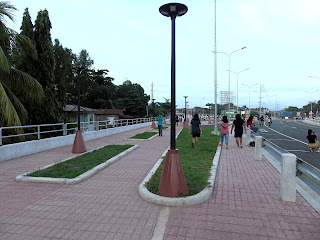Christians' Bible is divided between the Old and the New Testament. The Old
Testament deals with books written by Moses, history of Ancient Israel, poems and prophecies of the future. The New Testament deals mainly on the life, ministry and teaching of Jesus who Christians believe as God's promised Messiah. Prophet Isaiah who lived about 700 years before Jesus Christ was one of the Old Testament prophets. He prophesied on the coming of God's Messiah among other things. Among them was the manner of how the Messiah would die. Below are selected chapters and verses of the Old Testament in the Book of Psalms and Isaiah which are related to the life of Jesus.
From The Book of Psalms, Chapter 22
1 My God, My God, why hast thou forsaken me? Why art though so far from helping me, and from the words of my roaring?
7 All they that see me laugh me to scorn: they shout out the lip, they shake the head, saying,
8 He trusted in the Lord that he would deliver him; let him deliver him, seeing he delighted in him,
14 I am poured like a water, and all my bones are out of joint; my heart is like wax, it is melted in the midst of my bowels.
15 My strength is dried up like a potsherd; and my tongue cleaveth to my jaws; and thou has brought me into the dust of death.
16 For dogs have compassed me; the assemble of the wicked have enclosed me: they pierced my hands and my feet.
18. They part my garments among them, and cast lots upon my vesture.
From the Book of the Prophet Isaiah, Chapter 53
4 Surely he had born our griefs, and carried out our sorrows: yet we did esteem him stricken, smitten of God and afflicted.
5 But he was wounded for our transgressions, he was bruised for our iniquities: the chastisement of our peace was upon him; and with his stripes we are healed.
6 All we like sheep have gone astray; we have turned everyone to his own way; and the Lord hath laid on him the iniquity of us all.
7 He was oppressed, and he was afflicted, het he opened not his mouth; he is brought as a lamb to the slaughter, and a sheep before his shearer is dumb, so he openeth not his mouth.
8 He was taken from prison and from judgment; and shall declare his generation? For he was cut off out of the land of the living; for the transgression of my people was he stricken.
9 And he made his grave with the wicked, and with the rich in his death; because he had done no violence, neither was any deceit in his mouth.
10 Yet it pleased the lord to bruise him; he hath put him to grief; when thou shalt make his soul and offering of sin, he shall see his seed, he shall prolong his days, and the pleasure of the Lord shall prosper in his hand.
Christians believe that above prophecies are fulfilled according the accounts in the New Testament . during Jesus lifetime. Jesus activities and his claim to be the Son of God caused grave concerns among the Jewish religious leaders so that they plotted against him. He was tried by the Jewish and Roman authorities (Psalm 22: 16). During those trials he did not make rebuttals of the accusations against him (Isaiah 53:7). Consequently, he was sentence to be executed through crucifixion (Isaiah 53:8, Psalm 22:16). Before the execution he went through severe forms of punishments and beatings (Psalms 22:14-15). Nailed on the cross, Jesus uttered these words: "My God, my God, why hast thou forsaken me?" (Psalm 22:1). As Jesus agonized on the Cross some people mocked him saying, "If he is indeed the Son of God, why shouldn't he ask God to help him!" (Psalm 22:7-8). Roman soldiers took off Jesus garment and divided it and cast lot to decide what each should take (Psalm 22:18). Jesus was crucified together with two criminals, and entered in the tomb of a rich person named Joseph of Arimathea (Isaiah 53:9). Jesus went through pain and death because of our iniquities and transgressions (Isaiah 53:4-6). What Jesus went through was the will of God (Isaiah 53:10).





















































